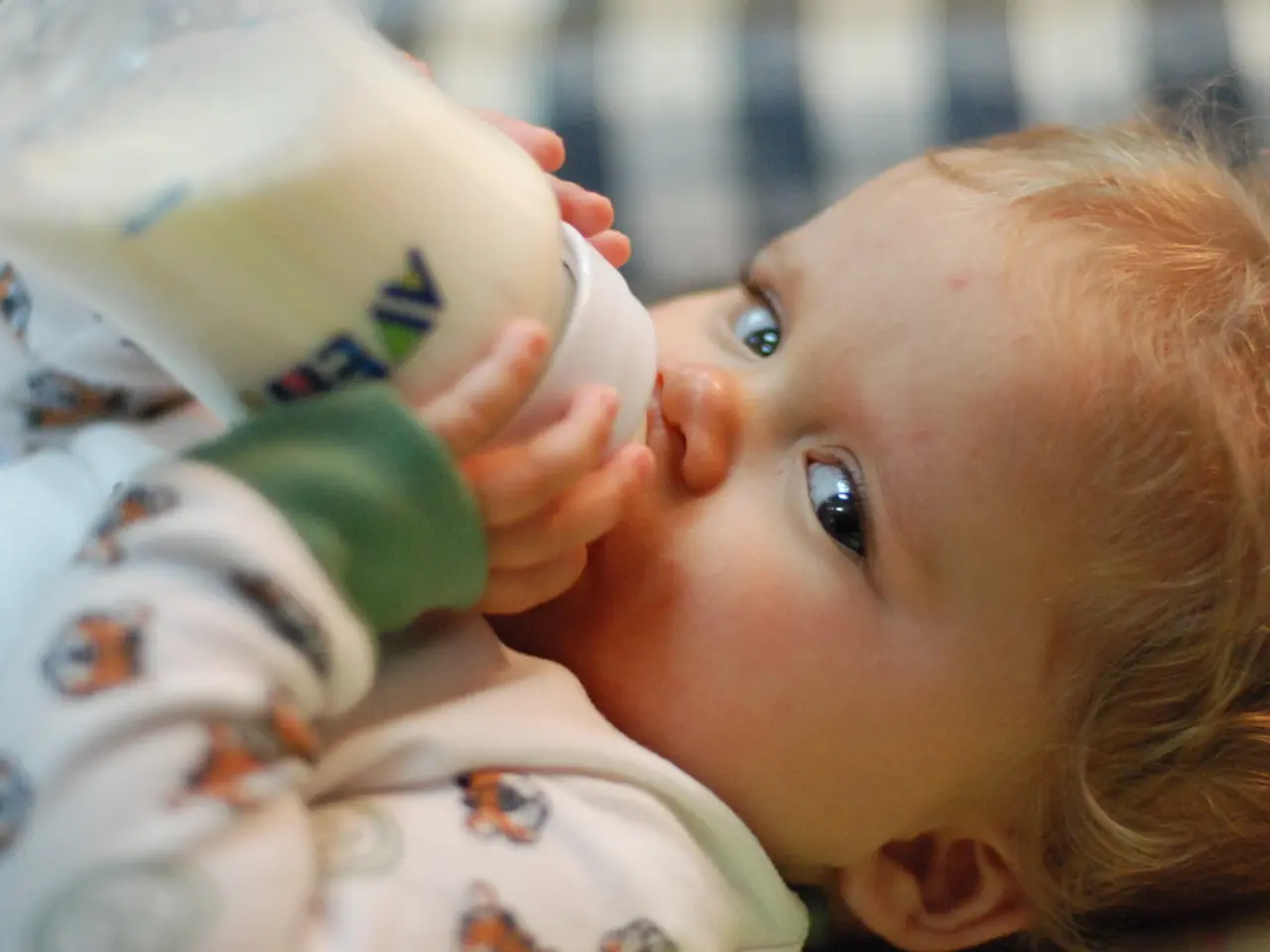Undeniable Symptoms Indicating Your Child May Have Lactose Intolerance
In the world of childhood nutrition, understanding lactose intolerance is crucial for parents. This condition, which affects a significant number of children, can often be confused with milk allergy, but they are distinct entities.
Lactose intolerance in children primarily arises due to a deficiency of lactase, an enzyme that breaks down lactose (the sugar in milk) in the small intestine. This deficiency can be congenital (present at birth, very rare), primary (develops gradually over time due to genetic factors), or secondary (caused by injury or illness damaging the intestinal lining). Genetic predisposition plays a role, with lactose intolerance more frequent in certain ethnic groups such as Native Americans, Blacks, Latinos, Asians, Mediterraneans, and Jews compared to northern and central Europeans.
Common symptoms of lactose intolerance in children usually appear 30 minutes to 2 hours after consuming milk or dairy products. These symptoms include acute, irritable, and often frothy diarrhea, nappy rash (diaper rash), abdominal pain and bloating, excessive gas or wind, nausea, irritable behavior, and restless sleep. These symptoms arise because undigested lactose ferments in the gut, causing gastrointestinal discomfort. Unlike cow’s milk allergy, lactose intolerance does not involve the immune system and is related solely to the digestive process.
If a child is lactose intolerant, the more lactose they consume, the more symptoms they'll experience. It's important for children with lactose intolerance to get enough calcium and vitamin D, as dairy is a good source for these nutrients. Over-the-counter lactase enzyme supplements can help alleviate symptoms for children with lactose intolerance, but may not help if consumed with large amounts of lactose-containing foods.
Lactose intolerance can be diagnosed using a lactose breath test or strict elimination of lactose-containing food for two to four weeks. Conditions such as Crohn's disease, an inflammatory disorder of the bowel, and celiac disease, a digestive disorder that causes damage to the small intestine when gluten is ingested, can also be associated with lactose intolerance.
For those who are lactose intolerant, limiting certain foods in a child's diet can help avoid symptoms. A dietitian can help identify foods containing lactose for patients with significant symptoms. Cleveland Clinic, a non-profit academic medical center, suggests reading "Your Practical Guide to Lactose Intolerance" for more information.
It's worth noting that approximately two-thirds of people lose the ability to fully digest lactose beyond childhood due to a natural decline of lactase activity in the small intestine. Babies with primary lactose deficiency are born with a complete absence of the lactase enzyme, causing severe diarrhea while on breast milk, necessitating special formulas. Rotavirus and giardiasis infections can cause temporary lactose intolerance.
Lactose intolerance is a nonthreatening disorder with no long-term complications. Parents should watch for digestive disturbances like diarrhea, abdominal pain, and irritability following milk consumption, as early diagnosis is important to manage symptoms by adjusting the child’s diet or using lactase supplements if needed.
- In the realm of health and wellness, understanding lactose intolerance is vital for families, particularly in caring for their children's digestive health.
- This medical condition, common among certain ethnic groups like Native Americans, Blacks, Asians, and Latinos, arises due to a deficiency of lactase, an enzyme required for lactose digestion.
- Lactose intolerance can be congenital, primary, or secondary, impacting the small intestine's ability to break down the sugar in milk.
- Chronic symptoms include diarrhea, abdominal pain, bloating, gas, nausea, irritable behavior, and restless sleep, caused by undigested lactose fermentation in the gut.
- Unlike milk allergy, lactose intolerance does not involve the immune system, making it unrelated to therapies and treatments for allergic reactions.
- In terms of childhood nutrition, it's crucial that children with lactose intolerance maintain proper nutrition, focusing on calcium and vitamin D intake through suitable sources.
- Over-the-counter lactase enzyme supplements can help manage symptoms, but may be ineffective with large amounts of lactose-containing foods.
- The disorder can be diagnosed through a lactose breath test or a strict elimination diet, and it may coexist with other chronic diseases, such as Crohn's disease or celiac disease.
- A dietitian's guidance can help parents limit lactose in their child's diet to minimize symptom occurrence.
- As people age, approximately two-thirds of them lose the ability to fully digest lactose, a natural decline in lactase activity often referred to as adult-onset lactose intolerance.
- Babies with primary lactose deficiency, born without the lactase enzyme, may require special baby formulas due to severe diarrhea while on breast milk.
- Infections like rotavirus and giardiasis can cause temporary lactose intolerance in both children and adults.
- Early recognition and management of lactose intolerance can help prevent discomfort and improve the overall health and mental well-being of affected individuals.




